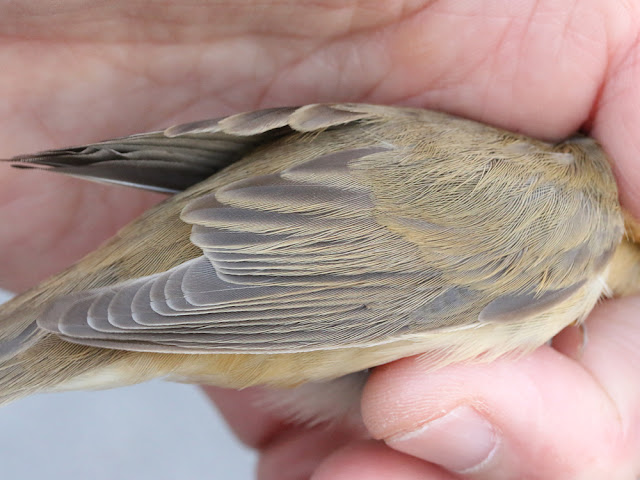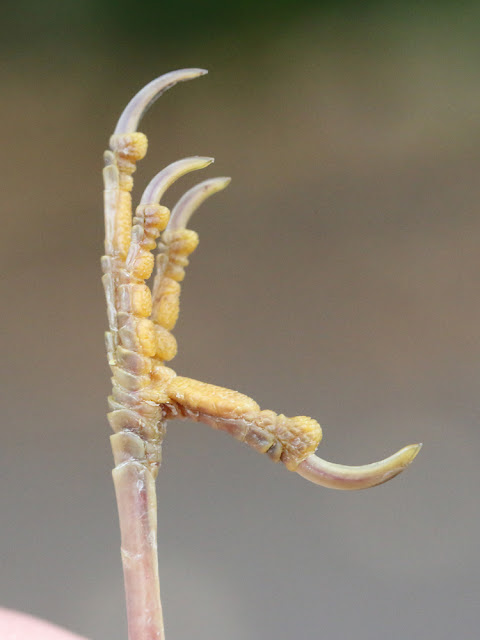31st August
30th August
5x CY, pregnant wall lizard, spotfly, yellow wag. 2+SF were at 8kings quarry + redstart (briefly), sparrowhawk. fly's distant (mainly obscured) couldnt get a view to be sure of pied. CY were east path n normal spot off avalanche road. several humming bird hawk moth eastern path. pic.twitter.com/1ZTkTzuHbj
— andy (@andy33082645) August 30, 2023
29th August
Sanderling from Ferrybridge this morning. Also 100+ Ringed Plover and a scattering of Turnstone and Dunlin. @PortlandBirdObs pic.twitter.com/koPGl5S6v7
— Tim Salkeld (@SalkeldTim) August 29, 2023
28th August
27th August
Apparent Marsh Warbler trapped at Culverwell at dawn - biometrics etc all look good pic.twitter.com/Nx8i8p7E3g
— Portland Bird Observatory (@PortlandBirdObs) August 27, 2023
26th August
Is it bedtime yet? This Portland Little Owl reckons so... pic.twitter.com/Zsb6zAlVZO
— Nic Wilson (@dogwooddays_nic) August 25, 2023
25th August
Don't do dragonflies in a big way but this looks like it's a female Southern Migrant Hawker - is that right? Think it's only the second island record although no doubt been overlooked since Ken Dolbear's first record pic.twitter.com/RUi9p4VER1
— Portland Bird Observatory (@PortlandBirdObs) August 25, 2023
Another day, another Convolvulus @PortlandBirdObs pic.twitter.com/cyMg2d8MV9
— Nic Wilson (@dogwooddays_nic) August 25, 2023
24th August
23rd August
Plenty of variety if not - Swallows excepted - that much by way of numbers today. The Swallows - many hundreds were on the move over Ferrybridge and at the Bill - were making the most of a clear sky and lovely warm sunshine to move ahead of a change in the weather pattern that looked to be manifesting itself late in the day as dark clouds built up only a little way out in the Channel; also on the move overhead were several Sparrowhawks, with 1 through at Ferrybridge and 3 through over the Bill. Grounded nocturnal migrants weren't so plentiful but did include an early first Firecrest of the autumn, 3 Pied Flycatchers, 2 Whinchats and singles of Common Sandpiper, Redstart and Grasshopper Warbler dotted about the centre and south of the island amongst a fair spread of more routine fare. At Ferrybridge, Ringed Plovers again dominated the wader tally, reaching 212. The sea was more poorly covered than of late, with 4 Arctic Skuas the best of what was detected in short watches from the Bill.
Wader numbers are impressive at Ferrybridge at the moment © Pete Saunders:
Bit of a weird catch out in the Crown Estate Field - hundreds of metres away from the nearest tree - the first Firecrest of the autumn pic.twitter.com/FxMOWHxAtd
— Portland Bird Observatory (@PortlandBirdObs) August 23, 2023
22nd August
Not great change in the weather and, at least when it came to the day's highlight, no great change in the birding with 2 Melodious Warblers at Culverwell - a new arrival together with yesterday's bird retrapped - providing the quality. With the exception of Ringed Plovers that continued to hover around the 200 mark at Ferrybridge, commoner migrants remained inexplicably thinly spread: most that might be expected did make the log but numbers were low and variety didn't beyond the level of the likes of 15 Tree Pipits, 9 Yellow Wagtails, a Greenshank, a Garden Warbler and a Pied Flycatcher at the Bill, a Redstart at Barleycrates Lane and 5 Common Sandpipers and a Greenshank at Ferrybridge. After yesterday's mini rush Balearic Shearwaters were reduced to a trickle of just 17 through off the Bill, where 98 Kittiwakes and a Little Gull represented the best of the rest.
If yesterday's Melodious Warbler was a bit of a dazzler, today's newcomer took subdued to another level with the yellow wash to the underparts reduced to the most subtle of skims © Martin Cade:
Both Common Sandpiper and Greenshank have been well-represented just lately and that momentum was maintained at Ferrybridge this morning © Pete Saunders:


















































